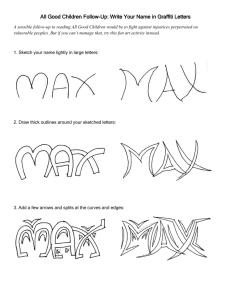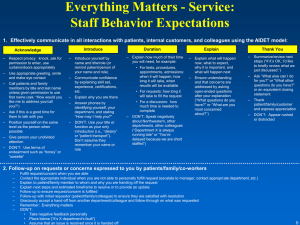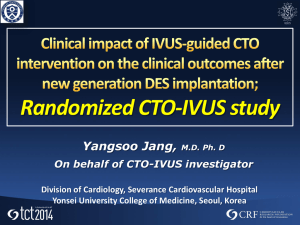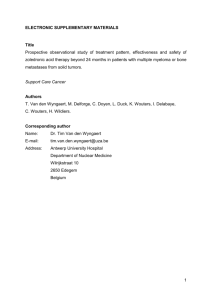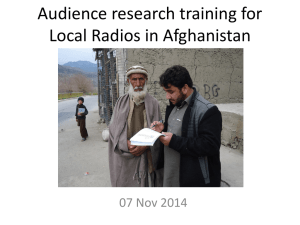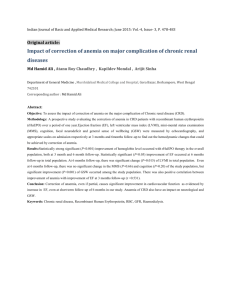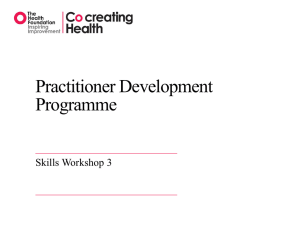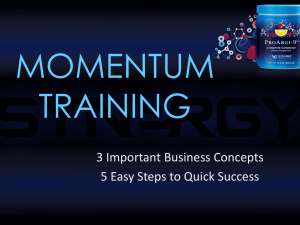How to Interpret and Apply the Characteristics of Excellence: A
advertisement
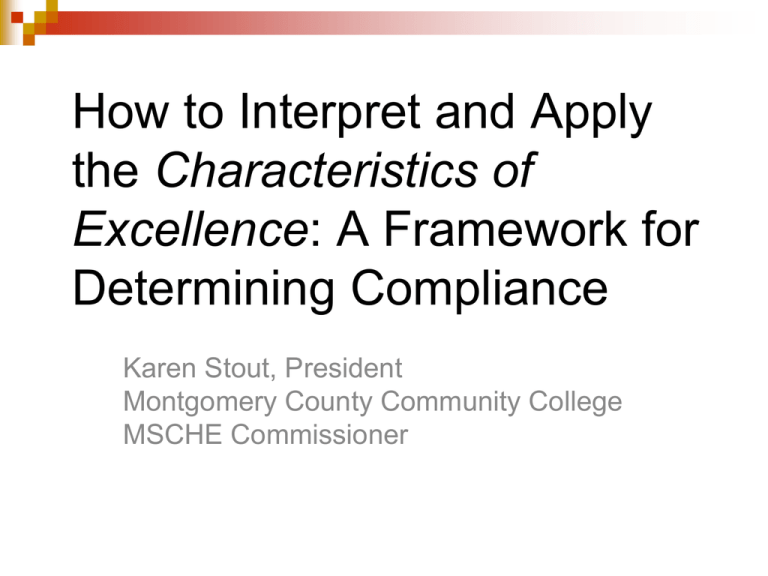
How to Interpret and Apply the Characteristics of Excellence: A Framework for Determining Compliance Karen Stout, President Montgomery County Community College MSCHE Commissioner Agenda Overview Format of Standards Fundamental Elements Determining Compliance Findings and Follow-up Additional Resources Overview 14 Standards Institutional Context (1-7) Educational Effectiveness (8-14) Each section ends with a Standard on assessment Developed with input from members Each member institution demonstrates compliance in light of its mission Format of Standards Standard Context Fundamental Elements Optional Analysis and Evidence Fundamental Elements and the Team Visit Must be viewed in the context of the institution’s mission and its Self-Study report Help to frame the Team’s questions Together, not individually, the Fundamental Elements constitute and encompass the Standard Not to be used as a simple checklist Determining Compliance Consider the institution’s mission and environment What is the institution trying to accomplish? How well are those aims being achieved? How is the institution improving aspects of the institution? Apply the Standards to the institution using professional judgment and common sense Determining Compliance Does the institution demonstrate sufficient evidence of compliance with the Standard under review? Does the Self-Study narrative demonstrate compliance? Do the supporting documents and answers to interview questions support the claims of the Self-Study? Does the institution have realistic plans for improvement? Looking for Evidence Systematic evidence vs. assertions, anecdotes, and future plans Evidence of consistency across operations and offerings Evidence of current and sustainable compliance Implemented processes and results Structures to ensure sustainability When in Doubt… Consider the impact of any gaps or shortcomings in addressing the Standard Does the institution understand the intent of the Standard? Is the institution recognizing and actively addressing the gaps or shortcomings? Findings and Follow-Up Types of Findings Significant Accomplishments, Progress, or Exemplary Practices Suggestions Recommendations Requirements Types of Follow-Up 5th-year Periodic Review Reports Progress Reports Monitoring Reports Small Team Visits Findings and Follow-Up Significant Accomplishments, Significant Progress, or Exemplary/Innovative Practices No follow-up required Team’s opportunity to highlight institution’s strengths Suggestions No follow-up required Team’s opportunity to provide collegial advice for institutional improvement Recommendations Actions needed to assure continuing compliance with the Standards Routinely addressed by the institution through its 5th-year Periodic Review Report Team may request earlier follow-up: Only in the Confidential Brief to the Commission Progress Report or Monitoring Report Requirements Actions needed to achieve compliance with the Standards Team report must indicate “The institution does not meet this Standard” Team must propose an action of warning or probation: Only in the Confidential Brief to the Commission Must be tied to specific Standards Additional Resources Characteristics of Excellence Team Visits Range of Commission Actions on Accreditation Your evaluation team chair and team members The Middle States Vice President assigned to the host institution
